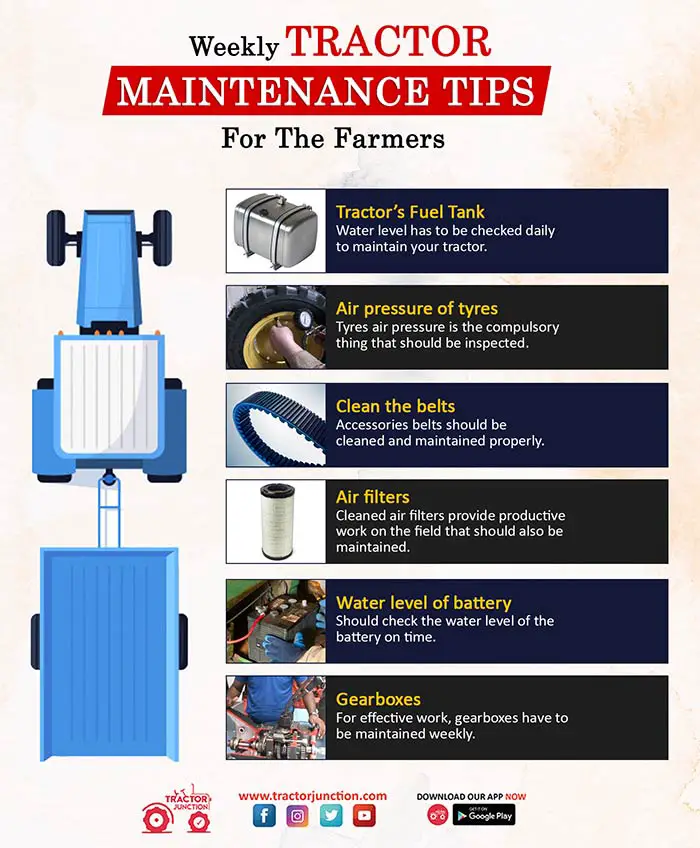This post may contain affiliate links which means I may receive a commission for purchases made through links. Learn more on my Private Policy page.
Maintaining and caring for your tractor accessories is essential for ensuring their longevity and optimal performance. Whether you rely on your tractor for agricultural purposes or simply enjoy using it for outdoor projects, taking the time to properly maintain and care for your accessories can save you time and money in the long run. From regular cleaning to performing routine inspections, this article will provide you with valuable tips and techniques to keep your tractor accessories in top shape for years to come.
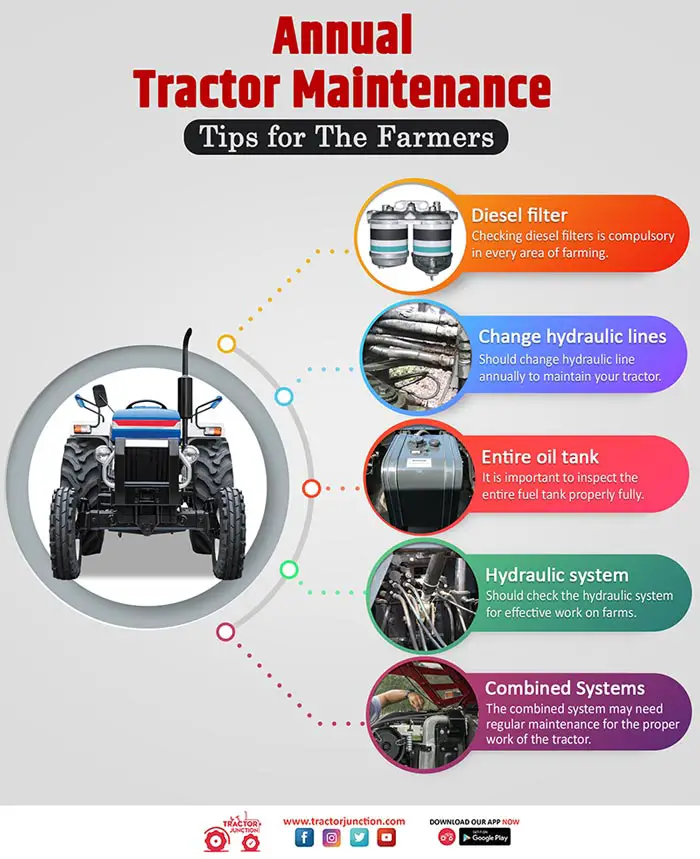
Regular Cleaning
Importance of cleaning tractor accessories
Regular cleaning of tractor accessories is essential for maintaining their performance and extending their lifespan. Tractor accessories, such as the blades, buckets, and attachments, are exposed to various elements and debris during their use. Without proper cleaning, dirt, grime, and leftover materials can accumulate, leading to decreased efficiency and potential damage. Regular cleaning not only keeps your tractor accessories looking clean and presentable, but it also ensures that they function optimally and remain in good working condition.
Cleaning techniques for different accessories
Different tractor accessories require specific cleaning techniques to ensure thorough cleaning without causing any damage. For blades and cutting attachments, it is important to remove any grass clippings or debris stuck in the blade teeth. Using a wire brush or scraper can effectively remove stubborn debris. After scraping off the bulk of the dirt, it is recommended to use a garden hose or pressure washer to rinse away the remaining dirt and residue.
Bucket attachments should also be cleaned regularly to remove any leftover materials. Start by emptying the bucket of any debris, then use a stiff-bristled brush to scrub away any remaining dirt or residue. Rinse the bucket thoroughly with water to ensure all dirt is removed.
Other accessories like sprayers and spreaders should be cleaned by flushing out any leftover chemicals or materials with water. Ensure all nozzles and valves are free from clogs or residue by using a brush or compressed air.
Recommended cleaning products
When it comes to cleaning tractor accessories, using the right cleaning products can make a significant difference. For general cleaning, mild dish soap or a specially formulated tractor accessory cleaner can be used. These cleaners are designed to effectively remove dirt and grime without damaging the surfaces of the accessories. Avoid harsh chemicals or abrasive cleaners as they can cause premature wear or corrosion.
For more stubborn dirt or stains, a mixture of vinegar and water or a specialized degreaser can be used. These products are suitable for removing grease and oil buildup. Always read the instructions on the cleaning products and test them on a small, inconspicuous area before applying them to the entire accessory.
Proper Storage
Benefits of proper storage
Proper storage of tractor accessories is crucial to protect them from damage and maintain their performance. When accessories are not in use, they are susceptible to various environmental factors such as sunlight, extreme temperatures, moisture, and dust. By storing your tractor accessories properly, you can:
- Prolong their lifespan: Proper storage prevents unnecessary wear and tear, ensuring that your accessories last longer.
- Maintain their functionality: Storing accessories in a controlled environment helps prevent damage and corrosion, allowing them to function optimally when needed.
- Maximize efficiency: By organizing your accessories in a dedicated storage space, you can easily locate and retrieve them, saving valuable time during busy farming seasons.
Indoor storage options
Indoor storage is ideal for protecting tractor accessories from the elements and ensuring their longevity. If you have a dedicated barn or shed, consider storing your accessories there. Choose an area that is cool, dry, and well-ventilated. It is important to keep accessories away from direct sunlight or extreme temperature changes, which can cause damage.
To keep accessories organized and easily accessible, consider using storage racks or hanging systems. These allow you to neatly store accessories and minimize the risk of them getting damaged or misplaced. Additionally, dust covers or plastic storage bins can provide an extra layer of protection against dust and moisture.
Outdoor storage solutions
If you do not have access to indoor storage space, there are still steps you can take to protect your tractor accessories from the elements. Invest in durable, weather-resistant covers specifically designed for tractor accessories. These covers provide protection against rain, snow, UV rays, and other outdoor elements. Before covering the accessories, ensure they are clean and dry to avoid trapping moisture, which can lead to corrosion.
When storing accessories outdoors, it is important to elevate them off the ground to prevent moisture accumulation. Use pallets or storage racks to keep them raised and ensure proper airflow underneath. Regularly inspect outdoor storage areas, removing any debris or pests that may pose a threat to the accessories.
Inspection and Maintenance
Importance of regular inspection
Regular inspection of tractor accessories is vital for identifying any signs of wear and tear or potential issues. By conducting routine inspections, you can catch problems early on and prevent costly repairs or accidents. Regular inspections also help ensure that your accessories are in compliance with safety regulations.
Key areas to inspect
During your inspections, pay close attention to the following key areas:
-
Blades and cutting attachments: Inspect the blades for any signs of damage, such as bends, nicks, or cracks. Ensure the blades are sharp and properly aligned. Check for any loose bolts or fittings that may need tightening.
-
Hydraulic systems: Check for any leaks or cracks in the hydraulic lines. Inspect the fittings and connections for signs of wear or deterioration. It is important to address any hydraulic system issues promptly to prevent damage to the accessories or the tractor itself.
-
Bucket attachments: Look for signs of excessive wear on the bucket, such as dents, cracks, or worn-out edges. Ensure that the bucket teeth or cutting edges are securely fastened and in good condition. Check the hydraulic cylinders for leaks or any abnormal movement.
-
Electrical components: Inspect cables, connectors, and wiring for any damage or loose connections. Ensure that all lights, switches, and gauges are functioning properly.
Maintenance procedures for different accessories
Routine maintenance is essential for keeping tractor accessories in optimal condition. Depending on the type of accessory, the maintenance procedures may vary. Here are a few maintenance tips for different tractor accessories:
-
Blades and cutting attachments: Keep the blades sharp by regularly sharpening or replacing them as needed. Lubricate the moving parts to prevent rust and ensure smooth operation.
-
Bucket attachments: Grease all pivot points and moving parts to prevent excessive wear. Inspect and replace any worn-out bucket teeth or cutting edges.
-
Sprayers and spreaders: Flush out the tanks and hoses after each use to remove any residue or chemicals. Inspect and replace any worn-out or damaged nozzles or valves.
Ensure that you follow the manufacturer’s instructions for the specific maintenance requirements of each accessory. Regular maintenance will not only prolong the life of your tractor accessories but also help optimize their performance.
Lubrication
Why lubrication is crucial
Lubrication plays a vital role in keeping tractor accessories operating smoothly and efficiently. Proper lubrication helps reduce friction, wear, and heat buildup, extending the life of moving parts and reducing the likelihood of breakdowns or malfunctions. Lubricants also protect against rust and corrosion, especially in outdoor storage or high-humidity environments.
Types of lubricants to use
Choosing the right lubricant is crucial for maintaining your tractor accessories. Different accessories require different types of lubricants, such as:
-
Grease: Grease is ideal for lubricating pivot points, joints, and moving parts that require a thicker, more viscous lubrication. It provides long-lasting protection against moisture and helps prevent rust and corrosion.
-
Oil: Oil is commonly used to lubricate engines and hydraulic systems. It is important to use the recommended oil viscosity and type specified by the accessory manufacturer.
Ensure that you use lubricants specifically designed for use in agricultural equipment and tractor accessories. Consult the equipment manual or contact the manufacturer for specific lubrication recommendations.
Proper lubrication techniques
When applying lubricants, it is important to follow proper techniques to ensure thorough and effective lubrication. Here are some general guidelines to follow:
-
Clean the surfaces: Before applying lubricant, clean the surfaces to remove any dirt or debris that might interfere with proper lubrication.
-
Apply the appropriate amount: Apply the lubricant in the recommended quantity. Too little lubricant may not provide adequate protection, while too much can attract dirt and cause buildup.
-
Distribute evenly: Ensure that the lubricant is evenly distributed across all moving parts, pivots, or joints. This helps ensure optimal lubrication and reduces the risk of premature wear or damage.
-
Follow the recommended schedule: Lubrication should be performed at regular intervals as recommended by the accessory manufacturer. Avoid over-lubricating, as this can also lead to issues. Refer to the equipment’s manual for the appropriate lubrication schedule.
Proper lubrication is an integral part of tractor accessory maintenance and will help keep your accessories running smoothly and efficiently for years to come.
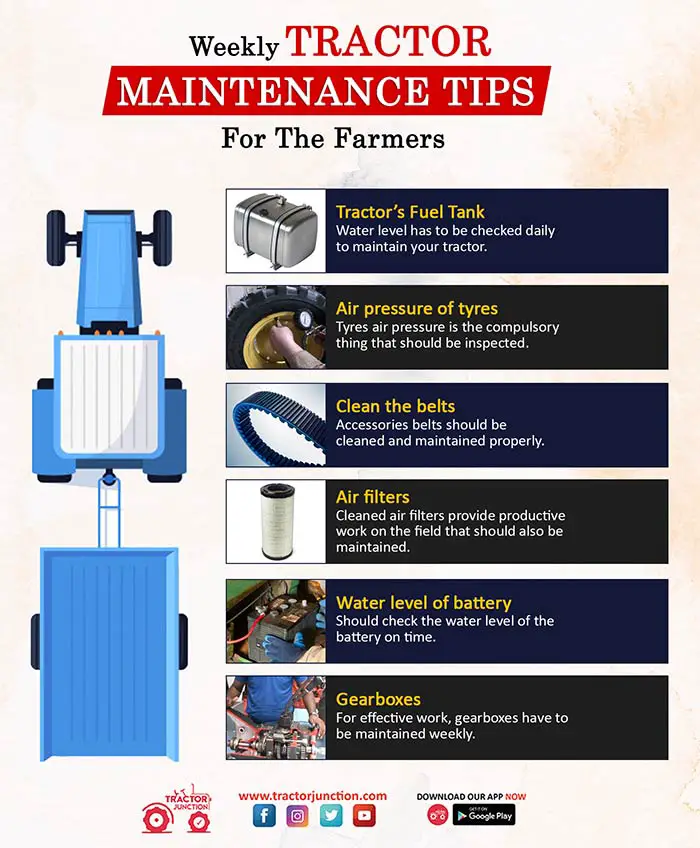
Avoiding Overloading
Understanding weight limits
Understanding the weight limits of your tractor accessories is crucial for safe and efficient operation. Overloading accessories beyond their specified capacity can result in serious damage to the accessory itself, the tractor, or even lead to accidents. Each accessory will have a maximum weight capacity specified by the manufacturer, and it is important to adhere to these limits.
To determine the weight of the material you are moving or carrying, use a scale or consult the material’s documentation. It is better to make multiple trips or use additional accessories if necessary, rather than risking overloading a single accessory.
Consequences of overloading
Overloading tractor accessories can have detrimental effects on their performance and lifespan. Some consequences of overloading include:
-
Structural damage: Overloading accessories beyond their capacity can lead to structural damage, such as bent or broken parts, stress fractures, or even complete failure. This can result in costly repairs or the need for replacement.
-
Impaired functionality: Overloaded accessories may not function properly, leading to decreased efficiency and productivity. They may struggle to perform their intended tasks, posing risks to both the operator and the surrounding environment.
-
Safety hazards: Overloading tractor accessories increases the risk of accidents and injuries. Overloaded accessories can become unstable, leading to sudden shifts in weight distribution and potential tipping or overturning of the tractor. This can cause severe harm to the operator and damage to the equipment.
Tips for preventing overloading
To prevent overloading your tractor accessories, follow these tips:
-
Know the weight limits: Familiarize yourself with the weight limits specified by the manufacturer for each accessory. Keep a record or reminder with the weight capacities easily accessible.
-
Weigh the materials: If you are unsure about the weight of the materials you are moving or carrying, use a scale or consult the documentation. This will ensure that you stay within the recommended limits.
-
Make multiple trips: If the materials exceed the weight capacity of a single accessory, make multiple trips or consider using additional accessories. Splitting the load will help maintain stability and prevent overloading.
-
Balance the load: Distribute the weight evenly across the accessory to maintain stability and prevent uneven stress on the equipment. Be mindful of the center of gravity and avoid placing excessive weight on one side.
By respecting weight limits, you can ensure the safe and efficient operation of your tractor accessories while prolonging their lifespan.
Proper Handling and Operation
Safe usage practices
Proper handling and operation of tractor accessories are essential for maintaining safety on the farm. Follow these safe usage practices to minimize the risk of accidents and injuries:
-
Read the user manual: Familiarize yourself with the manufacturer’s instructions and guidelines before operating any tractor accessory. The manual provides important information on safe usage, maintenance, and troubleshooting.
-
Wear appropriate safety gear: Always wear the necessary safety gear, such as gloves, safety glasses, and protective footwear, when handling tractor accessories. Depending on the accessory, additional protective equipment may be required, such as ear protection for noisy attachments or respiratory protection for chemical applications.
-
Ensure proper tractor stability: Before operating any accessory, ensure that the tractor is on a level surface and properly stabilized to prevent tipping or overturning. Use stabilizer bars or additional weight as recommended by the manufacturer.
-
Secure attachments properly: Ensure that all attachments are securely fastened to the tractor. Check that all bolts, pins, and latches are properly tightened and secured.
Precautions to avoid accidents
In addition to safe usage practices, there are additional precautions you can take to avoid accidents when handling tractor accessories:
-
Maintain clear lines of sight: Ensure that your vision is not obstructed by the accessory or any materials being moved. Clear debris or obstructions from the work area for better visibility.
-
Keep bystanders at a safe distance: Warn bystanders and ensure they are standing at a safe distance from the operating area. Do not allow anyone to stand or pass underneath the accessory or within its swing radius.
-
Use caution on slopes and uneven terrain: Exercise extra caution when operating on slopes or uneven terrain. Reduce speed, maintain control of the accessory, and avoid sudden movements or turns that could cause instability.
-
Stay alert and focused: Avoid distractions and remain vigilant when operating tractor accessories. Be aware of your surroundings, pay attention to any warning signs or unusual noises, and respond promptly to any potential issues.
Best practices for different accessories
Different tractor accessories may have specific best practices for safe handling and operation. Here are a few examples:
-
Blades and cutting attachments: When operating blades or cutting attachments, maintain a consistent cutting height and avoid cutting near obstacles or uneven terrain that could cause the accessory to bounce or become unstable.
-
Sprayers and spreaders: Follow proper chemical handling and application procedures when using sprayers and spreaders. Wear appropriate protective gear and adhere to recommended spraying techniques to prevent drift or over-application.
-
Bucket attachments: When using bucket attachments, avoid excessive speeds or abrupt movements that could cause the material being carried to shift or spill. Exercise caution when unloading or dumping the carried material.
Always refer to the manufacturer’s recommendations and guidelines for safe handling and operation of specific tractor accessories.
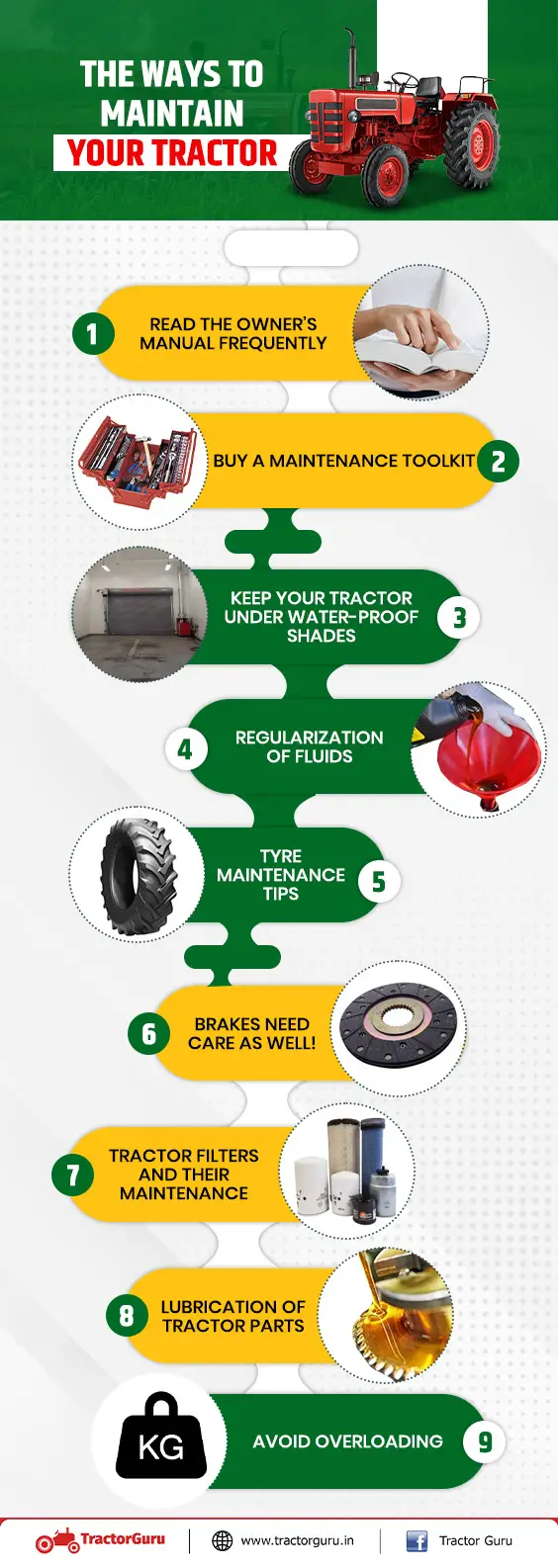
Protecting against Rust and Corrosion
Causes of rust and corrosion
Rust and corrosion can significantly impact the performance and lifespan of tractor accessories. Exposing accessories to moisture, high humidity, and corrosive materials can lead to the formation of rust and corrosion. Some common causes of rust and corrosion include:
-
Exposure to moisture: Accessories left outside or stored in environments with high humidity are more prone to rust and corrosion. Moisture creates an ideal environment for the oxidation of metals, leading to rust formation.
-
Chemical exposure: Some tractor accessories may come into contact with chemicals, such as fertilizers or pesticides. These chemicals can be corrosive and accelerate the rusting process if not properly cleaned off or protected.
-
Improper storage: Storing accessories in damp, poorly ventilated areas or leaving them exposed to the elements increases the risk of rust and corrosion. Moisture can seep into small crevices or gaps, leading to the formation of rust.
Preventive measures
To protect tractor accessories against rust and corrosion, consider implementing the following preventive measures:
-
Clean and dry thoroughly: After each use, clean the accessories thoroughly to remove any dirt, grime, or chemicals. Ensure they are completely dry before storing them, as moisture accelerates the rusting process.
-
Apply a protective coating: Consider applying a protective coating or rust inhibitor to vulnerable surfaces of the accessories. This can provide an additional layer of protection against moisture and corrosive elements.
-
Store in a controlled environment: Whenever possible, store tractor accessories indoors or in a well-ventilated, dry area. Temperature-controlled storage areas help reduce the risk of moisture accumulation and rust formation.
-
Regular inspection: Perform routine inspections of the accessories to catch any signs of rust or corrosion early on. Promptly address any areas of concern by cleaning, removing rust, and applying appropriate protective measures.
Treatment options for existing rust
If rust or corrosion has already formed on your tractor accessories, there are several treatment options available:
-
Mechanical removal: Use wire brushes, sandpaper, or steel wool to mechanically remove surface rust. This can be effective for small areas of rust or light corrosion.
-
Chemical rust removers: Rust removers or phosphoric acid-based products can dissolve rust and help restore the metal surface. Follow the manufacturer’s instructions and use appropriate safety precautions when using chemical rust removers.
-
Rust converters: Rust converters chemically transform rust into a more stable compound, preventing further corrosion. These converters can be applied to rusted areas and provide a protective coating.
After treating existing rust, it is important to take preventive measures, such as applying protective coatings or rust inhibitors, to minimize the chances of future rust formation.
Replacing Worn Out Accessories
Signs of wear and tear
Tractor accessories, like any machinery, will experience wear and tear over time. It is important to recognize the signs that indicate when an accessory needs to be replaced. Some common signs of wear and tear include:
-
Excessive damage or breakage: If an accessory has significant damage or is broken beyond repair, it is generally a clear indication that a replacement is necessary.
-
Reduced effectiveness or performance: If an accessory is no longer performing its intended task efficiently, despite regular maintenance and proper handling, it might be time for a replacement. This could include decreased cutting efficiency, reduced capacity, or leaks in hydraulic systems.
-
Worn-out components: Pay attention to signs of wear on key components, such as cutting edges, bucket teeth, or hydraulic seals. If these components are excessively worn or damaged, replacement is recommended to ensure optimal functionality and safety.
When to replace vs. repair
Determining whether to repair or replace a worn-out accessory depends on several factors:
-
Extent of damage: Assess the extent of damage or wear on the accessory. If the damage is minor and can be easily repaired, it may be cost-effective to repair rather than replace. However, if the accessory has significant structural damage or multiple worn-out components, replacement is often the better option.
-
Age and condition: Consider the age and overall condition of the accessory. If the accessory is older or nearing the end of its expected lifespan, it may be more practical to replace it rather than investing in extensive repairs.
-
Cost of repairs: Compare the cost of repairs to the cost of a new accessory. If the repairs are expensive and approaching the cost of a new accessory, it may be more economical to replace it.
Consult with a qualified technician or the manufacturer for their professional opinion on whether to repair or replace a worn-out accessory. They can provide expert advice based on the specific circumstances and condition of the accessory.
Finding compatible replacement parts
When replacing tractor accessories, it is important to ensure that the replacement parts are compatible and meet the necessary specifications. Here are a few steps to help you find compatible replacement parts:
-
Identify the model and make: Identify the model and make of the tractor accessory for which you need replacements. This information can usually be found in the equipment’s manual or on the accessory itself.
-
Contact the manufacturer: Reach out to the manufacturer or authorized dealers to inquire about compatible replacement parts. Provide them with the specific information about your accessory, and they can advise you on the appropriate replacement parts.
-
Online resources: Utilize online resources, such as the manufacturer’s website or reputable equipment parts suppliers, to search for compatible replacement parts. These platforms often offer detailed product descriptions, specifications, and compatibility information to help you find the right parts.
When purchasing replacement parts, ensure that they meet the required quality standards and are authentic. Genuine parts are designed to fit and operate seamlessly with your tractor accessories, providing the best performance and longevity.

Proper Tire Maintenance
Importance of tire care
Proper tire maintenance is crucial for safe and efficient tractor operation. Tires are one of the most critical components of a tractor accessory, as they provide traction, stability, and support. Neglecting tire care can lead to decreased performance, increased fuel consumption, and heightened safety risks.
Checking tire pressure
Regularly checking the tire pressure is essential for maintaining tire performance and longevity. Insufficient tire pressure can lead to increased fuel consumption, decreased traction, and uneven wear. On the other hand, overinflated tires can result in reduced ride comfort, decreased traction, and increased risk of tire damage.
To check the tire pressure, use a pressure gauge to measure the pressure when the tires are cold. Consult the manufacturer’s recommendations or the equipment manual for the recommended tire pressure for your specific tractor accessory. Adjust the tire pressure as needed using a suitable air compressor.
Routine tire inspections
Routine inspections of tractor accessory tires help identify any signs of damage or wear that need to be addressed. Here are a few key areas to examine during tire inspections:
-
Tread wear: Check the tread depth of the tires using a tread gauge. Excessive wear indicates the need for tire replacement. Uneven tread wear could indicate underlying issues with tire alignment or improper inflation.
-
Cracks or cuts: Inspect the tire sidewalls and tread for any cracks, cuts, or punctures. These can weaken the tire structure and increase the risk of blowouts. Address any damage promptly by repairing or replacing the affected tire.
-
Bulges or blisters: Look for any bulges or blisters on the tire surface. These are often signs of internal damage or weak spots and can lead to tire failure. Replace any tires with bulges or blisters immediately.
-
Valve stems and caps: Check the valve stems for any damage or leaks. Ensure that the valve stems have proper caps to prevent debris, moisture, or air leakage.
Regular tire inspections will help you catch any issues early on and take appropriate action, ensuring the safety and optimal performance of your tractor accessories.
Seasonal Storage and Preparations
Preparing for winter storage
Proper seasonal storage preparations are crucial, especially during winter months when tractor accessories may not be used as frequently. Before storing your tractor accessories for winter, consider the following steps:
-
Thorough cleaning: Clean the accessories thoroughly, removing any dirt, debris, or chemicals. Pay extra attention to removing any corrosive materials that can damage the accessories during storage.
-
Lubrication: Apply a light coat of lubricant to all moving parts and pivot points. This will help prevent rust and keep the accessories functioning smoothly during the storage period.
-
Remove batteries: If your tractor accessories have batteries, remove them before storage. Store the batteries separately in a cool, dry location and periodically charge them to maintain optimal battery life.
-
Inflate tires: Inflate the tires to the recommended pressure before storage. Adequate tire pressure helps prevent flat spots and maintains the overall tire condition.
-
Choose optimal storage: Store accessories in a dedicated storage area away from extreme temperature fluctuations, direct sunlight, and moisture. If possible, consider storing them indoors or under weather-resistant covers.
Precautions for extended periods of inactivity
If your tractor accessories will be inactive for an extended period, such as during the off-season, it is important to take additional precautions to ensure their longevity and optimal performance. Here are a few precautions to consider:
-
Regular inspections: Schedule periodic inspections during the inactive period to check for any signs of moisture accumulation, pests, or deterioration. This will help identify and address any issues promptly.
-
Pest control: Implement preventive measures to protect your accessories from pests. Block any potential entry points, such as small openings or gaps, and use pest deterrents or traps to minimize the risk of damage.
-
Battery maintenance: If your accessories have batteries, continue to periodically charge them to maintain their optimal performance. Follow the manufacturer’s recommendations for charging intervals and procedures.
-
Moisture control: Use desiccant packs or moisture-absorbing products to control moisture levels in the storage area. This helps prevent rust and corrosion formation on the accessories.
Springtime preparations
As winter comes to an end and you prepare to use your tractor accessories again, follow these steps to ensure a smooth transition:
-
Inspect for damage: Thoroughly inspect all accessories for any signs of damage or wear that may have occurred during storage. Address any issues promptly to prevent further damage or potential safety hazards.
-
Lubrication: Apply fresh lubricant to all moving parts and pivot points. This will help alleviate any dryness or rust that may have accumulated during the storage period.
-
Inflate tires: Check the tire pressure and inflate them to the recommended level. Inspect the tires for any signs of damage or significant wear. Replace any damaged or excessively worn-out tires.
-
Test functionality: Before using the accessories, test their functionality to ensure they are operating smoothly and efficiently. Check all hydraulic systems, electrical components, and moving parts for proper function.
By following these seasonal storage and preparation practices, you can help maintain the performance and longevity of your tractor accessories, ensuring they are ready for use when you need them.
In conclusion, regular cleaning, proper storage, inspection and maintenance, lubrication, avoiding overloading, proper handling and operation, protecting against rust and corrosion, replacing worn-out accessories, proper tire maintenance, and seasonal storage preparations are all essential aspects of maintaining and caring for your tractor accessories. By following the recommended practices and taking proactive measures, you can extend the lifespan, ensure optimal performance, and enhance the safety of your tractor accessories.
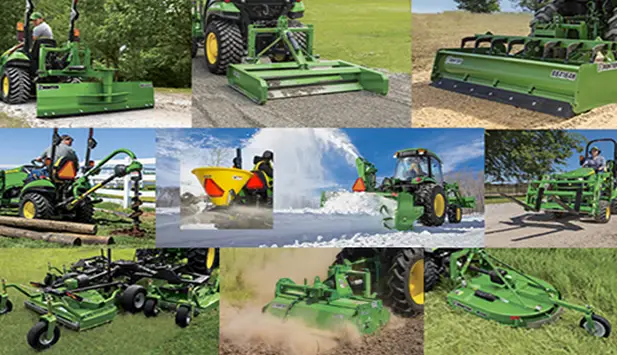
This post may contain affiliate links which means I may receive a commission for purchases made through links. Learn more on my Private Policy page.

